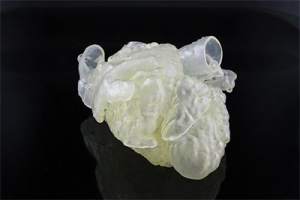New York’s Mount Sinai Health System has introduced 3D printing services for its Department of Neurosurgery. Clinicians will now have the opportunity to order 3D models for their medical cases and users of this ‘Medical Modelling Core’ will be charged a low fee, according to a press release.
In addition to 3D printing services, simulation as well as virtual reality will be available. Four 3D printers will be brought in as well as a laser cutter to allow for the fabrication of neuroanatomy models specific to each patient and their individual medical case.

The system was designed by Anthony Costa PhD, an assistant professor and director of neurosurgery simulation at the Icahn Medical School, New York. Segmentation tools were also developed in order to accelerate the process of turning radiological data into models which are then suitable for 3D printing and modelling.
Latest prints include skull tumors and spine modelling to assist in the treatment of damage caused by Scoliosis. 3D printing models are in use to help surgeons prepare for arthroplasty – surgery required when a joint needs replacing. Other branches of medicine which will benefit from this scheme include orthopedics and cardiology.

Joshua Bederson, chair for the Department of Neurosurgery at Mount Sinai’s Health System commented that all 3D resources will be used for the planning stages of surgery and will therefore act as a trial run for surgeries. 3D printing technology will also play a crucial role when it comes to consulting patients and helping them to understand their surgical process in greater detail.
Mount Sinai’s press release went onto state that having an in-house 3D printer will save costs in the long term. For example, the 3D models created by cost physicians $500 rather than seeking the services of a vendor which the health service noted could potentially cost up to five times more.
If you wish read more on the latest developments of 3D printing in the world of medicine, similar stories include a French start-up’s use of printed body parts in attempts to reduce mortality caused by surgery as well as a clinical center in the Chinese province of Fendu which endeavors to become a hub for China’s 3D printing scene and has high ambitions to provide 3D body implants within a 24 hour turnaround.
Featured image shows full color 3D printed anatomical hearts by Stratasys. Photo by Michael Petch.


